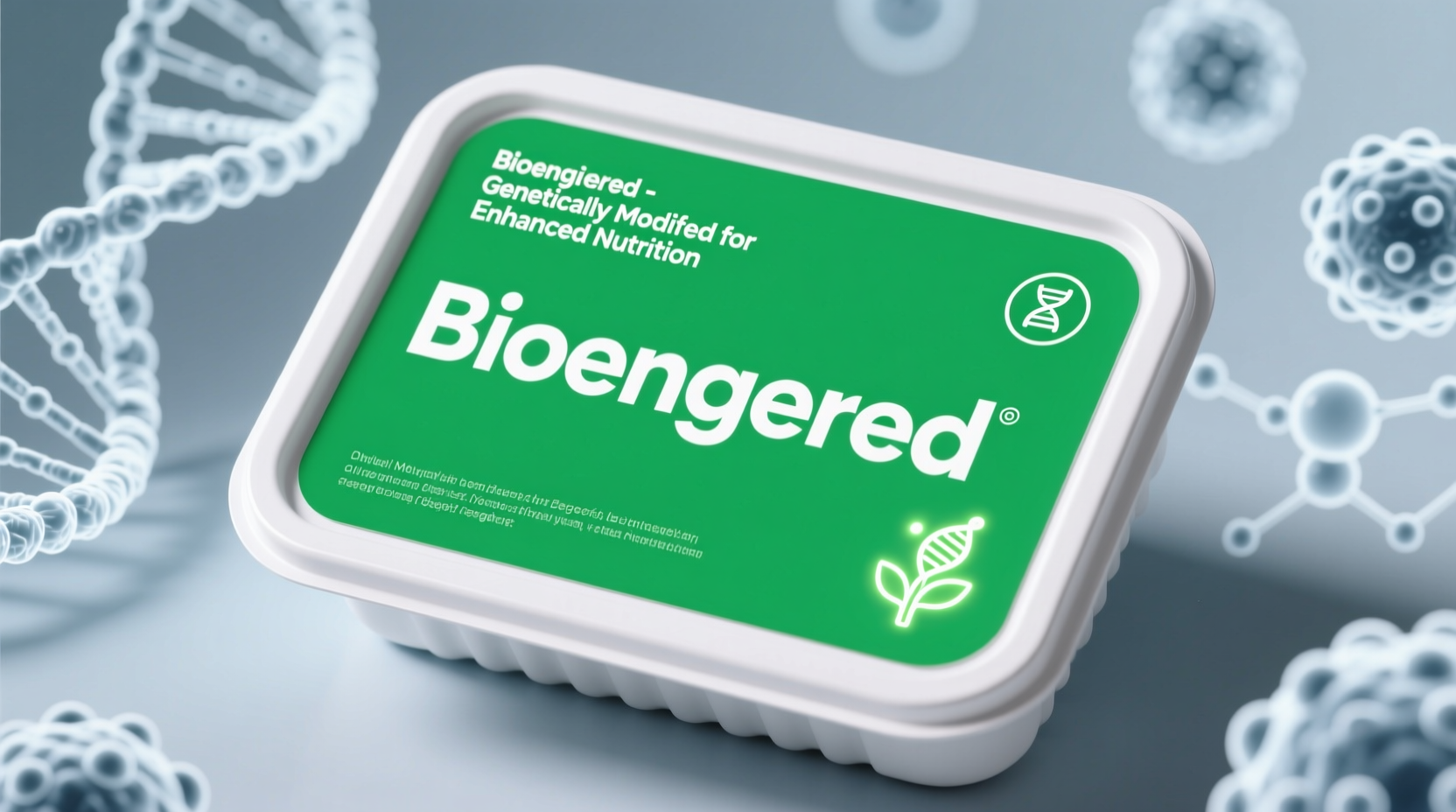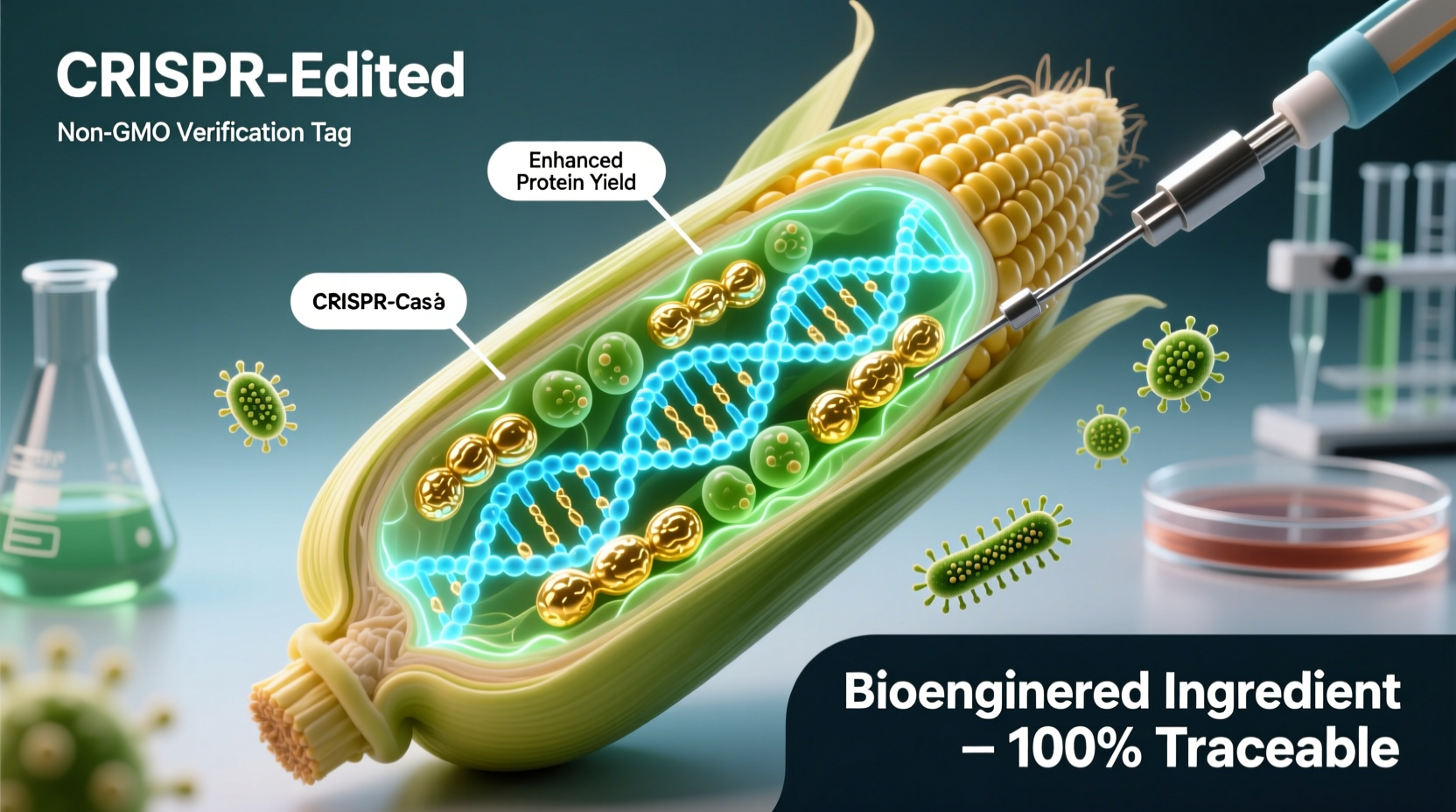Curious about what exactly qualifies as a bioengineered food ingredient and how it affects your grocery shopping? You're not alone. With increasing transparency requirements and evolving food technology, understanding these ingredients has become essential for informed consumer choices. This guide cuts through the confusion with science-backed facts and practical guidance you can use immediately.
Understanding Bioengineered Food Ingredients: Beyond the Basics
When you see "bioengineered" on a food label, it refers to ingredients created using modern molecular techniques that directly alter an organism's genetic material. Unlike traditional cross-breeding methods that mix thousands of genes, bioengineering targets specific traits with precision. The U.S. Department of Agriculture defines these as foods containing detectable modified genetic material that was created using recombinant DNA techniques and could not otherwise be obtained through conventional breeding or found in nature.
The distinction between "bioengineered" and "GMO" (genetically modified organism) matters. While all bioengineered foods are technically GMOs, not all GMOs qualify as bioengineered under current U.S. labeling laws. The key difference lies in detectability of modified genetic material in the final food product.
Evolution of Bioengineered Food Regulation
Key Milestones in Bioengineered Food History
- 1994: FDA approves first bioengineered food (Flavr Savr tomato)
- 1996: First bioengineered crops (soybeans, corn) commercially planted in U.S.
- 2016: National Bioengineered Food Disclosure Law signed by President Obama
- 2018: USDA establishes National Bioengineered Food Disclosure Standard
- January 1, 2022: Mandatory labeling requirements take effect for most products
- 2023: USDA expands guidance on small food manufacturers' compliance options
How Bioengineered Ingredients Differ From Other Modified Foods
| Modification Type | Technique Used | DNA Changes Detectable? | Labeling Required? |
|---|---|---|---|
| Bioengineered | Recombinant DNA techniques | Yes, in final food | Yes, under USDA standard |
| Traditional GMO | Cross-breeding, mutagenesis | No, or undetectable | No |
| Gene-edited (non-BE) | CRISPR without foreign DNA | No detectable modification | No |
| Conventional breeding | Natural selection, hybridization | N/A | No |
Most Common Bioengineered Ingredients in U.S. Food Supply
According to USDA data, these ingredients appear most frequently in bioengineered foods:
- Sugar beets (95% of U.S. crop is bioengineered for herbicide tolerance)
- Soybeans (94% bioengineered, primarily for oil production)
- Corn (92% bioengineered, used in sweeteners and oil)
- Canola (90% bioengineered for oil production)
- Papaya (some Hawaiian varieties bioengineered for virus resistance)
- Squash (certain varieties bioengineered for virus resistance)
When these ingredients appear in packaged foods as detectable modified genetic material, they trigger labeling requirements. Highly refined products like sugar or oil from bioengineered crops often don't require labeling because the genetic modification isn't detectable in the final product.

Navigating Bioengineered Food Labels: What Consumers Need to Know
The USDA's National Bioengineered Food Disclosure Standard requires food manufacturers to disclose bioengineered ingredients through:
- Text statement: "Bioengineered food" or "Contains a bioengineered food ingredient"
- BE symbol: Standardized logo appearing on packaging
- QR code: Scannable code linking to disclosure information
- Phone number or website: For additional information
Exemptions apply for:
- Very small food manufacturers (less than $2.5 million annual revenue)
- Restaurants and similar establishments
- Foods where bioengineered material is undetectable
- Ingredients derived from animals fed bioengineered feed
Scientific Consensus on Safety and Regulation
Major scientific organizations, including the National Academies of Sciences, Engineering, and Medicine, have concluded that bioengineered foods currently available are as safe to eat as their non-bioengineered counterparts. The FDA, USDA, and EPA share regulatory responsibility:
- FDA: Ensures safety and proper labeling of human and animal food
- USDA: Oversees planting and environmental impact of bioengineered crops
- EPA: Regulates pesticides produced by bioengineered plants
Unlike many other countries, the U.S. doesn't require pre-market safety approval for bioengineered foods. Instead, developers voluntarily consult with the FDA through a pre-market review process to ensure safety standards are met.
Practical Guidance for Informed Shopping
When navigating bioengineered food choices, consider these practical steps:
- Check for disclosure: Look for the BE symbol or text statement on packaging
- Understand exemptions: Remember that highly refined ingredients often don't require labeling
- Read beyond the label: Some "non-GMO" claims may not reflect current BE labeling requirements
- Use scanning tools: Many smartphone apps can scan QR codes for additional information
- Consider your priorities: Whether environmental impact, health concerns, or ethical considerations drive your choices
For those seeking to avoid bioengineered ingredients entirely, certified organic products provide the most reliable option, as organic standards prohibit the use of bioengineered ingredients.











 浙公网安备
33010002000092号
浙公网安备
33010002000092号 浙B2-20120091-4
浙B2-20120091-4